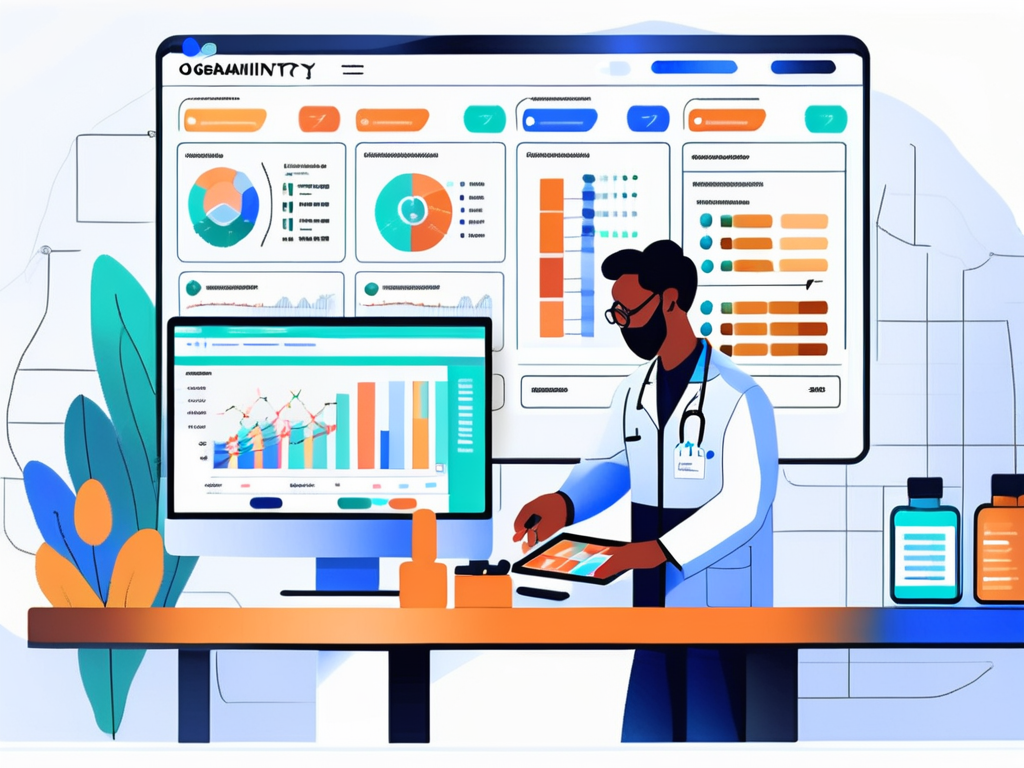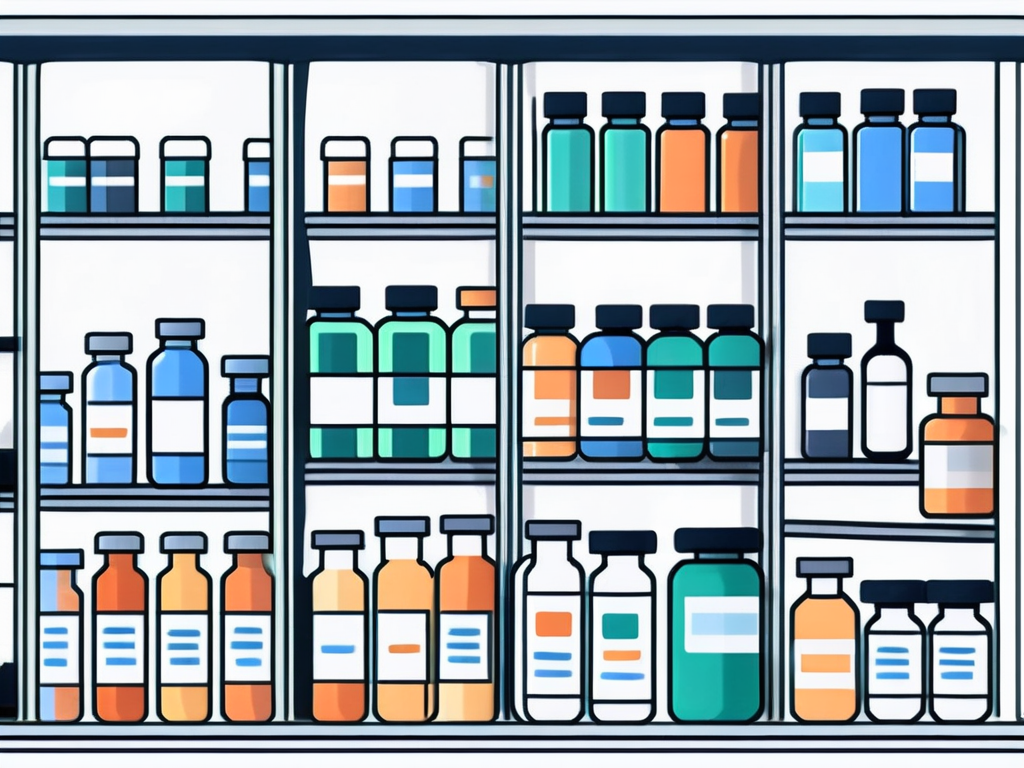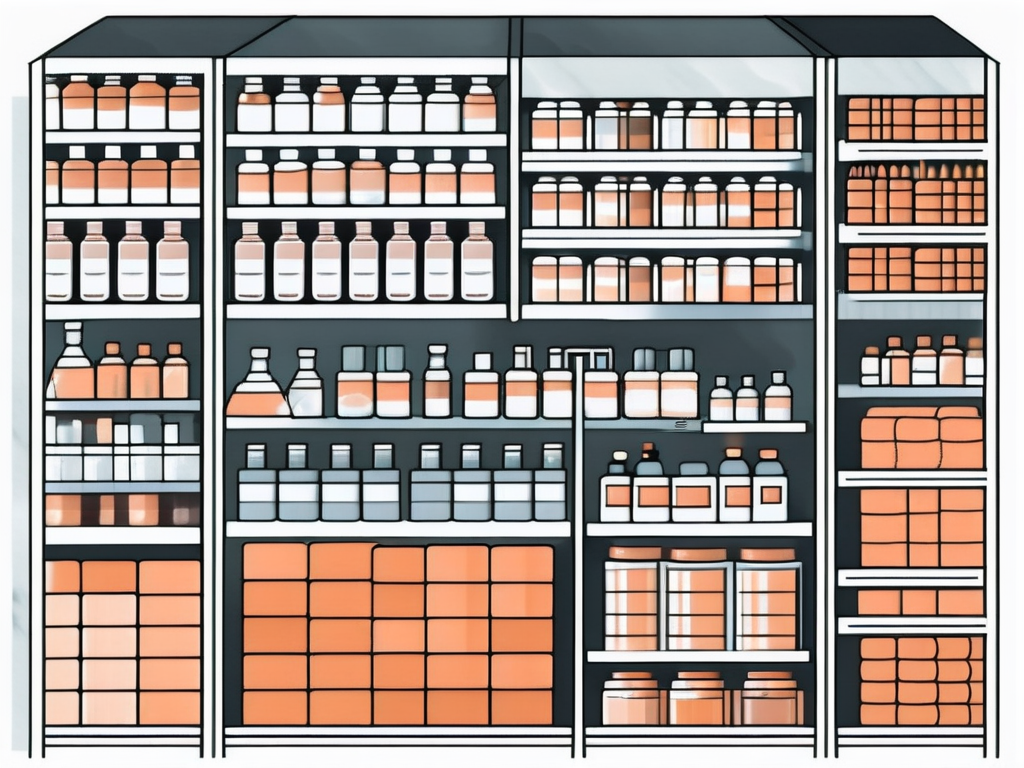Effective medication inventory management is crucial for healthcare facilities and pharmacies to ensure the availability of essential medications and improve patient care. In today’s digital age, pharmaceutical inventory management software has become an invaluable tool in streamlining inventory processes and minimizing errors. This guide will provide an in-depth understanding of medication inventory management and explore the features, benefits, and steps to implementing inventory management software. We will also discuss common challenges in medication inventory management and the role of technology in revolutionizing pharmaceutical inventory management.
Understanding Medication Inventory Management
Efficient medication inventory management involves the systematic control, organization, and tracking of medication stock. It encompasses various processes, including procurement, storage, dispensing, and monitoring of medication usage. The primary goal is to ensure that the right medication is available in the right quantity at the right time while minimizing waste and avoiding stockouts.
The Importance of Effective Inventory Management
Effective medication inventory management plays a crucial role in healthcare settings. It helps healthcare providers optimize medication utilization, reduce costs, and improve patient safety. By implementing robust inventory management practices, healthcare facilities can minimize the risk of medication errors, prevent expired medication use, and enhance medication traceability.
Key Components of Medication Inventory Management
Several key components contribute to successful medication inventory management:
- Accurate Documentation: Maintaining accurate records of medication stock levels, expiration dates, and lot numbers is essential for effective inventory management.
- Inventory Classification: Categorizing medications based on their therapeutic class, risk level, or storage requirements can streamline inventory control processes.
- Storage and Organization: Proper storage conditions, such as temperature control and adequate shelving, are vital to prevent medication deterioration and ensure easy access.
- Supply Chain Management: Collaborating with suppliers and wholesalers to optimize procurement processes and maintain a continuous supply of medications.
Accurate documentation is a fundamental aspect of medication inventory management. It involves meticulously recording medication stock levels, expiration dates, and lot numbers. This information allows healthcare providers to have a clear understanding of their inventory and make informed decisions regarding medication usage and reordering. By maintaining accurate documentation, healthcare facilities can avoid medication shortages or overstocking, ensuring that they have the right medications available when needed.
Another crucial component of medication inventory management is inventory classification. Categorizing medications based on their therapeutic class, risk level, or storage requirements can significantly streamline inventory control processes. For example, grouping medications by therapeutic class allows healthcare providers to easily identify alternative options if a particular medication is not available. Additionally, categorizing medications based on their risk level helps prioritize stock management, ensuring that critical medications are always adequately stocked.
Storage and organization are vital aspects of medication inventory management. Proper storage conditions, such as temperature control and adequate shelving, are essential to prevent medication deterioration and maintain their efficacy. Medications that require specific storage conditions, such as refrigeration or protection from light, must be stored accordingly to ensure their potency. Additionally, organizing medications in a logical and systematic manner allows for easy access and reduces the risk of medication errors.
Supply chain management is another key component of medication inventory management. Collaborating with suppliers and wholesalers is crucial to optimize procurement processes and maintain a continuous supply of medications. By establishing strong relationships with reliable suppliers, healthcare facilities can ensure timely delivery of medications, reducing the risk of stockouts. Effective supply chain management also involves monitoring market trends and anticipating changes in medication availability, allowing healthcare providers to proactively adjust their inventory management strategies.
Exploring Pharmaceutical Inventory Management Software
Pharmaceutical inventory management software offers advanced features and functionalities to automate and streamline inventory processes. Let’s delve into the essential features to look for:
Features to Look for in Inventory Management Software
- Real-time Inventory Tracking: The software should provide real-time visibility into medication inventory levels, enabling healthcare professionals to make informed decisions.
- Automated Reordering: An automated reordering system based on predefined inventory thresholds can help prevent stockouts and excessive stock accumulation.
- Barcode Scanning: The ability to scan barcodes on medication packaging for accurate inventory counting and identification.
- Integration with Pharmacy Systems: Seamless integration with pharmacy management systems for efficient data exchange and improved workflow.
When it comes to managing pharmaceutical inventory, having the right software is crucial. But what are the benefits of implementing such software? Let’s explore:
Benefits of Implementing Inventory Management Software
- Improved Accuracy: By automating inventory tracking, it reduces human errors associated with manual record-keeping.
- Time and Cost Savings: Automation streamlines inventory processes, saving time spent on manual tasks and reducing the risk of stockouts or overstocking.
- Enhanced Regulatory Compliance: Software with built-in compliance features helps healthcare facilities adhere to regulatory requirements.
- Data Analytics and Reporting: Advanced reporting capabilities enable data-driven decision-making for optimization and forecasting.
Implementing inventory management software not only improves accuracy but also brings other advantages. For instance, it allows healthcare professionals to focus more on patient care rather than spending valuable time on inventory management tasks. With real-time inventory tracking, healthcare facilities can ensure that they always have the right medications in stock, reducing the risk of medication errors and improving patient safety.
Furthermore, the automated reordering feature helps prevent stockouts, ensuring that healthcare professionals have the necessary medications on hand when needed. This not only saves time but also prevents delays in patient treatment, ultimately improving overall healthcare outcomes.
In addition to these benefits, inventory management software offers enhanced regulatory compliance. With built-in compliance features, healthcare facilities can easily track and manage medication expiration dates, ensuring that expired medications are promptly removed from inventory. This helps facilities maintain compliance with regulatory requirements and avoid any potential penalties or legal issues.
Lastly, the data analytics and reporting capabilities of inventory management software provide valuable insights for optimization and forecasting. By analyzing inventory data, healthcare facilities can identify trends, forecast demand, and make data-driven decisions to optimize inventory levels and reduce costs.
In conclusion, pharmaceutical inventory management software offers a range of features and benefits that can greatly improve the efficiency and accuracy of inventory processes in healthcare facilities. From real-time inventory tracking to automated reordering and enhanced regulatory compliance, implementing such software can lead to significant time and cost savings, as well as improved patient safety and overall healthcare outcomes.
Steps to Effective Medication Inventory Management
Establishing effective medication inventory management practices involves the following steps:
Regular Inventory Audits
Performing regular inventory audits helps identify discrepancies, monitor stock levels, and ensure accuracy in medication records. It involves physically counting medications, comparing them with the recorded quantities, and investigating any discrepancies.
Conducting these audits on a scheduled basis, such as monthly or quarterly, can help healthcare facilities maintain a tight control over their medication inventory. By cross-referencing physical counts with electronic records, any discrepancies can be swiftly addressed, preventing potential medication errors and ensuring patient safety.
Implementing a First-In-First-Out Approach
A first-in-first-out (FIFO) approach ensures that the oldest medications are used first. This minimizes the risk of expired medication usage and reduces wastage. It requires proper stock rotation and organization practices.
By adhering to the FIFO approach, healthcare providers can also enhance medication safety by reducing the chances of administering outdated or less effective medications to patients. This method not only promotes efficient inventory turnover but also aligns with best practices recommended by regulatory bodies to maintain quality standards in healthcare settings.
Overcoming Challenges in Medication Inventory Management
Medication inventory management comes with its own set of challenges. Let’s explore two common challenges:
Dealing with Expiry Dates and Recalls
Managing medications nearing their expiration dates and effectively handling medication recalls is vital. Implementing a robust system that tracks expiration dates and facilitates recall management can help maintain medication safety and compliance.
One critical aspect of managing expiry dates is the proper rotation of stock. This involves the First Expired, First Out (FEFO) method, where medications with the closest expiry dates are used first to prevent wastage. Additionally, conducting regular audits and inspections can help identify expired medications early, reducing the risk of administering ineffective or harmful drugs to patients.
Managing Stock Levels and Reordering
Finding the right balance between overstocking and stockouts is crucial. Utilizing inventory management software that automatically triggers reorders based on predefined thresholds helps optimize stock levels and ensure continuous availability.
Forecasting demand accurately is another key factor in managing stock levels. Factors such as seasonal variations, market trends, and patient demographics can influence medication usage. By analyzing historical data and trends, healthcare facilities can anticipate fluctuations in demand and adjust their inventory levels accordingly to prevent shortages or excess stock.
The Role of Technology in Pharmaceutical Inventory Management
Technology is transforming the landscape of pharmaceutical inventory management:
The Impact of Automation and AI
Automation and Artificial Intelligence (AI) are revolutionizing medication inventory management. Automated inventory tracking, AI-driven demand forecasting, and predictive analytics enable healthcare facilities to optimize inventory levels and improve overall efficiency.
The Future of Pharmaceutical Inventory Management
The future of pharmaceutical inventory management is promising. Advancements such as Internet of Things (IoT) for real-time tracking, robotic dispensing systems, and blockchain for enhanced traceability hold great potential for further enhancing medication inventory management practices.
In conclusion, medication inventory management is critical for healthcare facilities and pharmacies. By understanding the key components, utilizing pharmaceutical inventory management software, implementing effective practices, and leveraging technology, healthcare providers can optimize medication availability, enhance patient safety, and streamline inventory processes.







